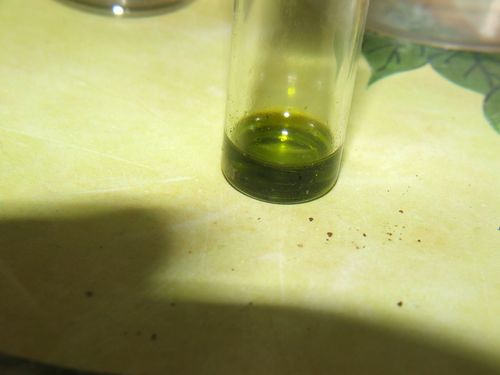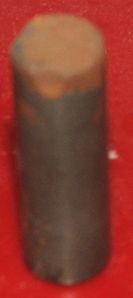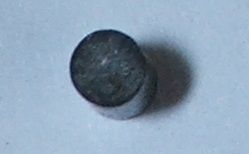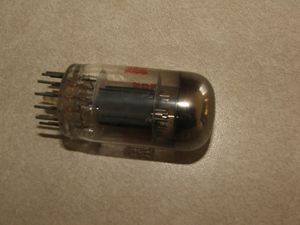Trivalent iron has a significant amount of oxidative power to it. Here I will list some of the reactions of this common yet interesting substance.
Thermites: Iron(III) oxide (or red iron oxide) is one of the most common ingredients in thermites. Iron thermites tend to burn extremely hot, yet without much violence, allowing a prolonged heating of the supporting materials. See Magnesium - iron(III) oxide thermite for my experience with an iron(III) oxide thermite.
Most of the other experiments involve trivalent iron in aqueous solution as a chloro complex. To make this, iron(III) oxide is dissolved in hydrochloric acid and the resulting brown and highly acidic solution is the starting point.
Iron: Iron comproportionates with iron(III) chloride, forming a greenish solution of iron(II) chloride. This reaction goes to completion, as evidenced by the complete whiteness when the solution is neutralized with sodium carbonate. See Comproportionation Reaction for other comproportionation reactions including the iron one.
Nickel: Nickel reacts with iron(III) chloride, producing a green solution of iron(II) and nickel(II) ions. While nickel dissolves very slowly with hydrogen peroxide/hydrochloric acid and dissolution is almost nonexistent with pure HCl, nickel dissolves quite rapidly in trivalent iron solution.

Copper: Copper reacts with iron(III) chloride, forming copper(II) and iron(II) ions. However, copper(II) reacts further with copper, producing white and insoluble copper(I) chloride. This then further reacts with more copper(II) chloride, producing a brown solution. This breaks up when diluted with water to white copper(I) chloride and green copper(II) chloride again.
Bismuth: Bismuth dissolves extremely slowly and incompletely in iron(III) chloride solution. When the resulting solution is diluted, some bismuth hydrolysis is noticed.
Tin: Tin reacts with iron(III) chloride solution, forming tin(IV) ions and iron metal. Since tin and its divalent ion are both relatively strong reducing agents, they reduce iron(III) all the way to iron metal.

Lead: Lead reacts with iron(III) chloride, forming insoluble lead(II) chloride and iron(II) ions. However, the reaction does not run to completion because the lead(II) chloride forms an impermeable layer.
As you can see, iron(III) is quite a reactive substance, reacting with and reducing most metals. That is why it is used as an etchant.








